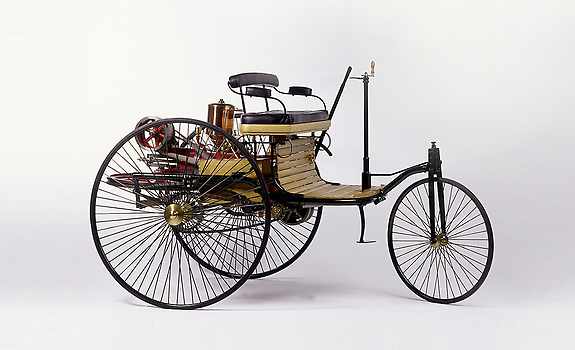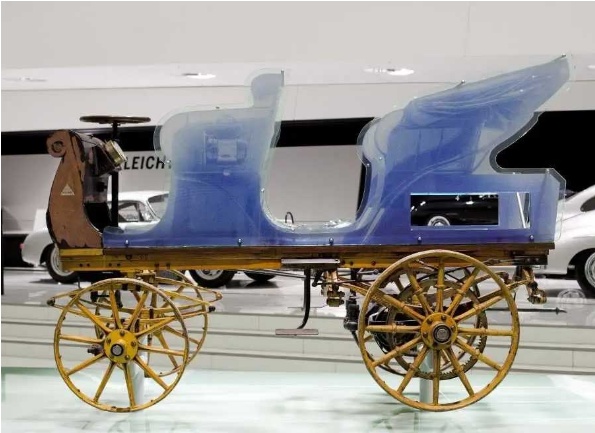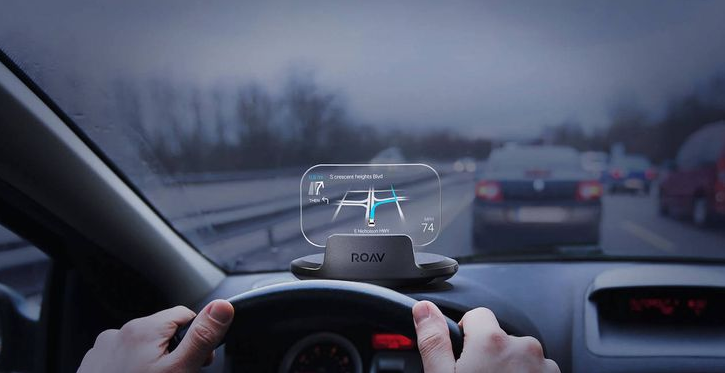Introduction
In the modern world, automobiles have become a common feature of societies across the globe. These cars have been advancing and evolving within the past three centuries in response to the inefficiencies associated with their predecessors. Engineers and designers have always considered the unique demands of the intended users to improve their vehicles continuously. While the present-day automobiles help more people pursue their goals, they still harbor some limitations and challenges that affect their acceptability. This paper gives a detailed analysis of the technical evolution of vehicles from the 18th century. It goes further to describe modern cars, their state-of-the-art features, and future innovations.
The First Automobile
From 1700, individuals began to experiment and consider revolutionary ideas that could transform carriages relying on horses for locomotion. While such predecessors can be studied as automobiles in one way or the other, it would be agreeable that they lacked engines or internal mechanisms for propulsion. It was in the early 1700s when engineers succeeded to present the first car relying on steam power. The concept would emerge from steam engines found in locomotives at the time. In 1870s, the global community witnessed the first car running on a steam-powered engine. However, the first patented and recognizable automobile would be a three-wheeler given the name Motorwagen (Rangel, 2020). It was manufactured and designed by a German by the name Karl Benz in the year 1886. Benz’s product carried a mounted gas engine, a new technical development that would reshape the future of automobiles.

Based on this information, it is agreeable that the first successful and recognizable motor vehicle was manufactured in German by Karl Benz. Having produced his first two-stroke engine with one cylinder, Benz was able to focus on a lightweight automobile that would help transform the industry forever. Many historians and automobile researchers agree that Benz’s patent for his car would become the first model number (Mercedes-Benz Group, n.d.). In 1888, the practically of Benz’s car would come to test when his wife, Bertha, and their two sons embarked on a journey using a better version of the car (Wang & Chen, 2020). The three covered a distance of around 180 kilometers from Manheim to the upcoming town of Pforzheim. This decisive act would encourage the global society to have a different view of automobiles and their revolutionary abilities.
While Benz was able to work on a single prototype, he would consider the emerging insights and innovations to construct better and improved versions of his automobile. This analysis goes further to indicate that Benz introduced a patented car in the late 19th century (Mercedes-Benz Group, n.d.). This achievement would compel more people to stop focusing on steam-powered engine. The gasoline engine for Benz’s prototype was simple and easy to manage. It was also lightweight, a realization that would help support the innovation and production of additional cars in Germany. This section means that one car was introduced by a single inventor. He would, therefore, become the father of modern automobiles as many people know them today.
Evolution of the Automobile
Relying heavily on Benz’s initial design, the first four-wheeled vehicle would emerge in the year 1891. The success of this new car paved way for mass production of similar automobiles capable of carrying four people. The improvements on these cars were based on the electric versions that had been developed in different parts of Europe and North America much earlier. It was in 1898 when Ferdinand Porsche went a step further to develop a revolutionary car that was hybrid in nature (Rangel, 2020). His patented vehicle was designed in such a way that it could use both gas and electricity. While the idea did not take off as he would have wanted, the concept of a hybrid vehicle would come to light a century later (Rangel, 2020). In these earlier versions, it was evident that turn signals and windshields were missing in those predecessors (see Fig. 2). Nonetheless, the attributes associated with them would set the stage for the production and advancement of future vehicles.

Before the end of the 19th century, most of the available cars were only produced in small numbers. Members of the society were unable to afford some of the automobiles due to issues of costs and availability. In 1908, Henry Ford would invent the assembly line to mass produce his cars. His brand name, Ford, delivered gas-powered vehicles that were available in large quantities to more people. Ford’s famous Model T would become the first affordable mass-produced vehicles in the world. During the same period, Ford chose to collaborate with Thomas Edison in an effort to come up with a battery design for his cars. Within a few years, Ford was able to eliminate the hand-crank and replace it was the electric starter in the year 1912 (Rangel, 2020). This technological breakthrough helped revolutionize the nature and efficiency of automobiles.
The emergence of the first manufacturing assembly line would pave way for additional improvements and inclusion of superior features in different vehicles. Most of those elements would still be noticeable in modern-day automobiles. The concept of mass creation encouraged innovators and engineers to introduce a number of systems capable of maximizing safety. Some of them included seat belts and electric doors. According to Rangel (2020), the first car with turn signals became a reality in the year 1939 (Wang & Chen, 2020). With such developments, innovators became more curious and willing to include additional features that would make most of the cars in production more attractive. For instance, the cars of 1951 onwards would feature power steering technologies (Rangel, 2020). In 1957, most of the cars produced in America, Europe, and Japan contained cruise control systems.
Within the next three decades, the increasing number of accidents and deaths associated with automobiles encouraged companies and innovators to consider additional safety features. For instance, Oldsmobile would succeed in developing and installing the first airbag intended to cushion the passenger and driver in the event of an accident (Rangel, 2020). The car named Tornado would be the first one to have such a revolutionary feature (Rangel, 2020). The nature of these developments would compel governments and policymakers to introduce new laws that focused on safety features, including the presence of safety airbags.

The demand for cars began to increase in the 1950s and 1960s in different parts of the world. In this post-war world, most of the industries had recovered, thereby providing numerous job opportunities and resources to the greatest number of people. The wave of consumer society would emerge whereby more citizens would be willing to purchase different luxury items, including automobiles (Rangel, 2020). This rise in demand for cars compelled manufacturers in different parts of the world to implement assembly line production technologies. Consequently, the trend would result in any competitors, such as Mercedes Benz, Toyota, Ford, Mitsubishi, and Volkswagen. During the same period, many countries continued to explore crude oil and natural gas, a trend that increased the availability of gasoline in different parts of the world.
From the 1970s, most of the companies involved in car manufacturing would begin to focus on elegance, comfort, and safety than ever before. These pursuits would result in superior automobiles in the 1980s and 1990s. Most of these cars would come with advanced features that transformed the overall experience of the user, such as the presence of a sunroof, radio systems, windows, electric doors, and keyless start systems (Wellbrock et al., 2020). The wave of globalization became more pronounced in the 1990s. Such a development encouraged more companies to maximize their productions in an effort to meet the increasing level of demand in some of the emerging markets. Most of the established companies began to target customers in Latin America, Asia, and Africa.
State-of-the-Art Technologies and Automobiles
From the early 2000s, engineers and designers of cars have been focusing on emerging technologies and systems to integrate them into their respective products. The existing companies are focusing on these innovations to deliver high-quality vehicles that resonate with the demands of more customers while at the same time improving their experiences (Wang & Chen, 2020). While these technologies are plausible and revolutionary, it would be agreeable that they would not have come into reality without the works of great inventors, such as Benz and Ford.
Within the past two decades, most of the cars have come with state-of-the-art systems and technologies intended to meet the demands of the users. Most of the included innovations in most of the modern vehicles are intended to maximize user experience while improving the level of convenience (Akinshete, 2020). The first notable state-of-the-art technology integrated in some of the modern automobiles is the park assist (Akinshete, 2020). Such a system allows the driver to identify the best parking lot with the aid of sensors, radar arrays, and electronic sensors fitted in the car. The technology remains revolutionary and capable of addressing a major problem since the number of cars available in the market has been on the rise. The technology is also resourceful for people who might have improved skills as drivers.
The inclusion of head-up displays (HUDs) is a new technology capable of allowing the car user to find most of the crucial information on the windshield without focusing on the dashboard. This state-of-the-art technology is making it easier for drivers to navigate and move from one place to another with ease (see Fig. 4). Another system becoming a common feature in many cars is the Driver Drowsiness Detection system. Automobiles fitted with such a technology are capable of alerting the driver and ensuring that he or she has reduced chances of getting involved in an accident (Wang & Chen, 2020). This system has the potential to protect lives and make it possible for more people drive more comfortably.

In some high-end cars, customers can consider various state-of-the-art features before making their purchasing decisions. For instance, some of the cars in the market today are customized with massage and warming functions. Individuals would activate such systems by clicking a specific button. Experts indicate that such technologies are intended to maximize the driver’s level of comfort and ensure that he or she is able to reap maximum benefits from the car. Additionally, such automobiles have heated seated and armrests intended to provide the much-needed comfort or pleasure (Akinshete, 2020). In most of the surveys completed in the recent past, users have been observed to appreciate some of these revolutionary features since they deliver both experience and comfort.
Ambient lighting technology is another common state-of-the-art technology noticeable in many cars. Researchers in the field have proved that individuals tend to have favorite color themes that could eventually influence mood and concentration. In the recent past, some of the leading car manufacturers have implemented a number of themes and options for car buyers to select. The inclusion of ambient colors is capable of setting the needed mood, thereby maximizing the overall comfort of the driver (Wang & Chen, 2020). These systems have the potential to increase the level of concentration, thereby reducing the risk for accidents and disruptions.
The Future of Automobiles
On top of the revolutionary features discussed above, modern inventors and giant technological corporations are focusing on the power of autonomous cars. This approach is integrating all technological breakthroughs and engineering concepts to deliver high-quality cars. This trend is arising from the desire to protect the natural environment while allowing more people to achieve their goals much faster (Wellbrock et al., 2020). The models are expected to integrate the use of sensors, information technologies, machine learning, actuating systems, and processors. The end result would be revolutionary autonomous vehicles capable of completing numerous tasks with little or no human effort.
These improvements and innovative inputs in most of the cars available today appear to work synergistically to deliver positive results and experiences. Users relying on autonomous cars in the future would have slim chances of getting fatigued or being involved in an accident. The identified systems are avant-garde in nature and allow drivers to select the best color themes and identify appropriate parking spaces (Litman, 2022). The included systems are capable of reducing chances of getting depressed. Experts acknowledge that the automobile is continuing to evolve into the future (Akinshete, 2020). This reality means that more customers would be able to choose a wide range of cars with diverse options and systems. The good thing is that most of the involved innovators are focusing on safety, comfort, and experience. These trends reveal that future cars would be more acceptable, safer, and capable of addressing various human needs.
Conclusion
The modern car is quite different from the first prototype Karl Benz introduced and patented in the late 19th century. Without a windshield or turn signals, this automobile would set the foundation of future cars that would deliver comfort and safety to both the driver and the passenger. The completed analysis has revealed that engineers and innovators have been keen to improve automobiles in line with the recorded technological systems and demands from the targeted customers. In conclusion, the future of the automobile appears brighter since the technical evolution of cars remains work in progress.
References
Akinshete, T. (2020). 10 Modern car features that changed driving as we used to know it. Hotcars. Web.
Litman, T. (2022). Autonomous vehicle implementation predictions: Implications for transport planning. Victoria Transport Policy Institute.
Mercedes-Benz Group. (n.d.). Company history. Web.
Rangel, B. (2020). The evolution of automotive technology. Evans Auto Brokerage. Web.
Wang, H., & Chen, C. (2020). A case study on evolution of car styling and brand consistency using deep learning. Symmetry, 12(12), 2074-2103. Web.
Wellbrock, W., Laudin, D., Röhrle, L., & Gerstlberger, W. (2020). Sustainability in the automotive industry, importance of and impact on automobile interior – Insights from an empirical survey. International Journal of Corporate Social Responsibility, 5(10), 1-11. Web.